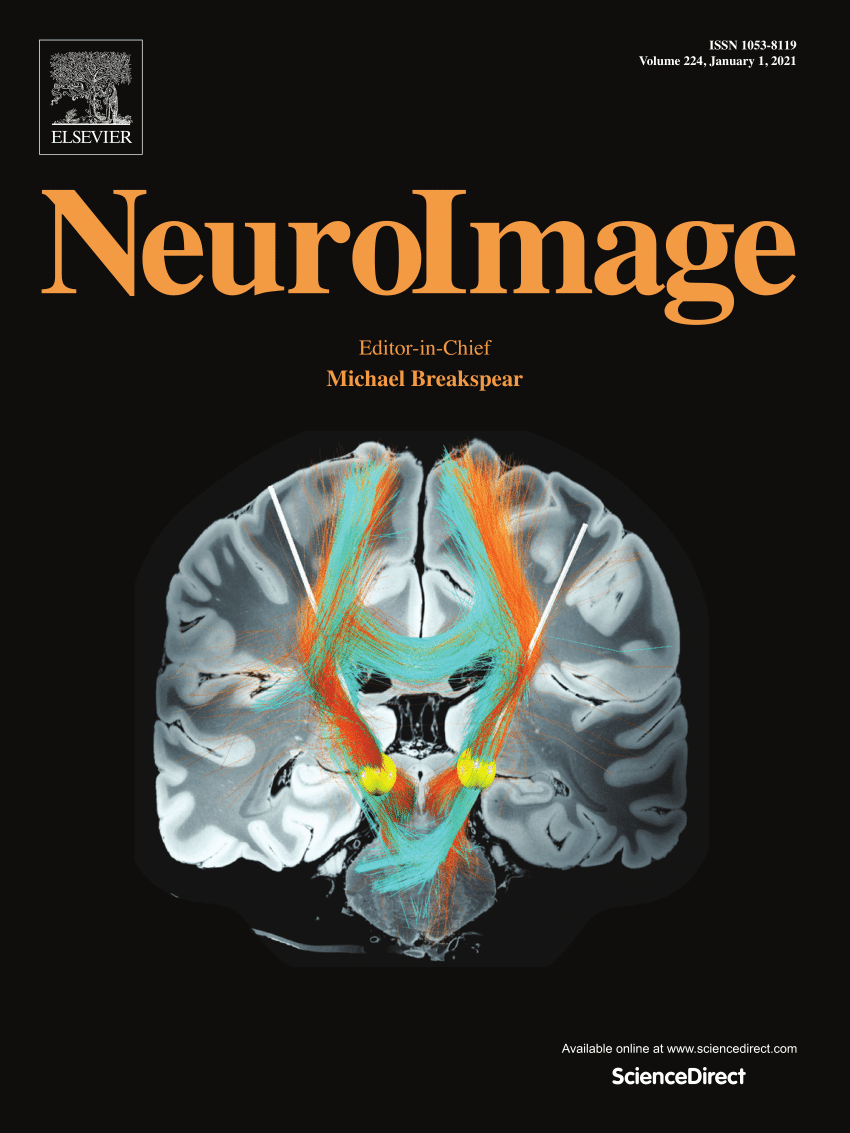Diffusion kurtosis imaging biomarkers associated with amelioration of neuroinflammation, gray matter microstructural abnormalities, and gut dysbiosis by central thalamic deep brain stimulation in autistic -like young rats
IF 4.7
2区 医学
Q1 NEUROIMAGING
引用次数: 0
Abstract
Autism spectrum disorder (ASD) is a neurodevelopmental condition characterized by abnormalities in brain microstructure, neuroinflammation, and social behavior deficits. In addition, children with ASD frequently exhibit irritable bowel syndrome and other gastrointestinal symptoms linked to anxiety. This study investigated if central thalamic nucleus deep brain stimulation (CTN-DBS) can improve social behavior, suppress neuroinflammation, restore brain microstructure, and reverse gut dysbiosis in the valproic acid-induced rat model of ASD by modulating the microbiota–gut–brain (MGB) axis. Daily CTN-DBS for 7 days (30 min/day) enhanced neuronal density, organization, and microstructural complexity as evidenced by increases in the diffusion kurtosis imaging (DKI) metrics—mean kurtosis (MK), axial kurtosis (AK), and radial kurtosis (RK). These neurostructural improvements were associated with reduced astrocyte and microglial activation, two core hallmarks of neuroinflammation in ASD, and lower systemic levels of the pro-inflammatory cytokines interleukin (IL)-1β, IL-6, interferon (IFN)-γ, and tumor necrosis factor (TNF)-α, signaling factors that may increase gut permeability and disrupt gut microbial composition. Indeed, CTN-DBS enhanced gut barrier function, promoted the proliferation of beneficial Bacteroides spp., and improved short-chain fatty acid (SCFA) metabolism, thereby restoring normal gut acetate and butyrate levels and counteracting dysbiosis. Specific energy absorption rate and thermal effect analyses demonstrated that CTN-DBS is safe under DKI. These findings support CTN-DBS as a safe and efficacious therapeutic strategy to reduce neuroinflammation, restore gray matter circuit function, and improve gut microbial composition in ASD via MGB axis modulation. Furthermore, DKI can reveal neurobiomarkers indicative of these improvements in ASD model rats.
扩散峰度成像生物标志物与自闭症样年轻大鼠中央丘脑深部脑刺激神经炎症、灰质微结构异常和肠道生态失调的改善相关。
自闭症谱系障碍(ASD)是一种以大脑微观结构异常、神经炎症和社会行为缺陷为特征的神经发育疾病。此外,患有自闭症谱系障碍的儿童经常表现出肠易激综合征和其他与焦虑有关的胃肠道症状。本研究探讨了中枢丘脑核深部脑刺激(CTN-DBS)是否能通过调节微生物-肠-脑(MGB)轴改善丙戊酸诱导的ASD大鼠模型的社会行为、抑制神经炎症、恢复大脑微观结构和逆转肠道生态失调。每日CTN-DBS 7天(30分钟/天)增强神经元密度、组织和微观结构复杂性,扩散峰度成像(DKI)指标——平均峰度(MK)、轴向峰度(AK)和径向峰度(RK)的增加证明了这一点。这些神经结构的改善与星形胶质细胞和小胶质细胞活化减少(ASD神经炎症的两个核心标志)以及促炎细胞因子白介素(IL)-1β、IL-6、干扰素(IFN)-γ和肿瘤坏死因子(TNF)-α的系统性水平降低有关,这些信号因子可能增加肠道通透性和破坏肠道微生物组成。事实上,CTN-DBS增强了肠道屏障功能,促进了有益拟杆菌的增殖,改善了短链脂肪酸(SCFA)代谢,从而恢复了正常的肠道乙酸和丁酸水平,抵消了生态失调。比能吸收率和热效应分析表明,CTN-DBS在DKI作用下是安全的。这些发现支持CTN-DBS是一种安全有效的治疗策略,可以通过MGB轴调节减少ASD的神经炎症,恢复灰质回路功能,改善肠道微生物组成。此外,DKI可以揭示ASD模型大鼠中指示这些改善的神经生物标志物。
本文章由计算机程序翻译,如有差异,请以英文原文为准。
求助全文
约1分钟内获得全文
求助全文
来源期刊

NeuroImage
医学-核医学
CiteScore
11.30
自引率
10.50%
发文量
809
审稿时长
63 days
期刊介绍:
NeuroImage, a Journal of Brain Function provides a vehicle for communicating important advances in acquiring, analyzing, and modelling neuroimaging data and in applying these techniques to the study of structure-function and brain-behavior relationships. Though the emphasis is on the macroscopic level of human brain organization, meso-and microscopic neuroimaging across all species will be considered if informative for understanding the aforementioned relationships.
 求助内容:
求助内容: 应助结果提醒方式:
应助结果提醒方式:


